Worried that your Sansevieria is not producing babies? Here are the reasons why your snake plant never produces pups and how to solve it.
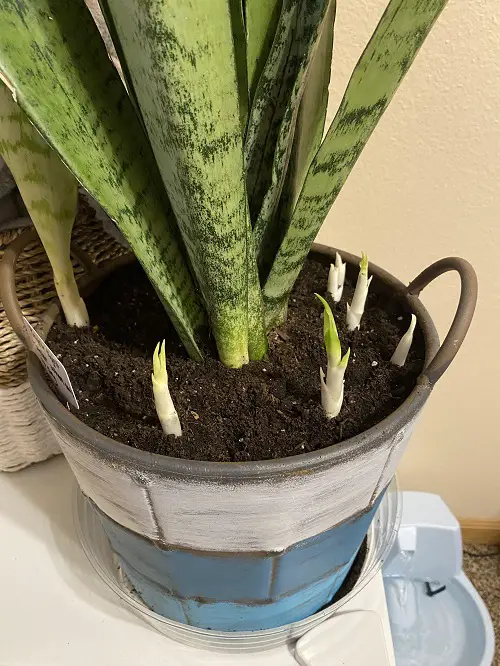
Sometimes, despite lovingly tending to their snake plant, gardeners find that it refuses to produce pups. These offshoots are their way of spreading, and if something is off, your plant will focus on survival rather than expansion. Let us find out why your snake plant isn’t producing pups and how to turn things around.
Reasons Why Your Snake Plant Never Produces Pups
Reason 1: Your Soil is Not Good
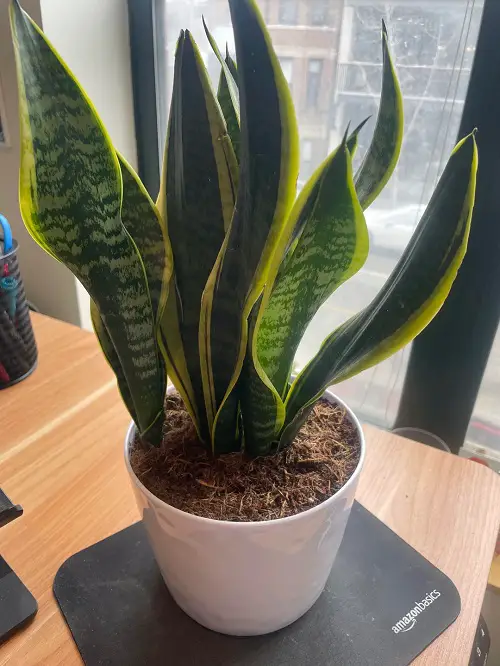
If you have been using rich, moisture-retentive soil for your snake plant, you might just be suffocating its ability to produce pups. Snake plants are survivors and do not need the nutrient-packed potting mix that other houseplants do.
When you plant it in overly rich, organic-heavy soil, your snake plant will focus entirely on growing tall instead of sending out babies. That’s because nutrient-dense soil tricks the plant into thinking it doesn’t need to multiply.
Pro Tip: The best mix for pup production is a cactus or succulent soil blend enhanced with perlite, sand, or pumice for extra aeration.
You can easily create this mix yourself by combining regular potting soil with a handful of perlite and another of coarse sand. Here are some DIY soils specifically for snake plants! Test the soil’s drainage by watering thoroughly and observing how quickly the water drains through.
Reason 2: Lack of Temperature Variations
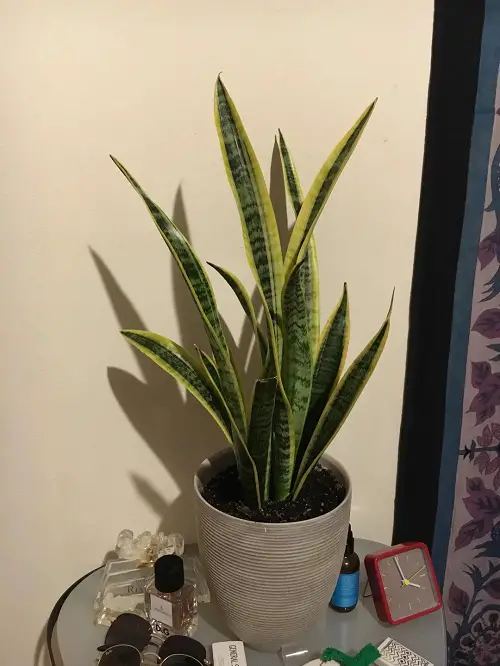
It might feel strange because most plants don’t like temperature changes. But the snake plant loves dramatic shifts between warm days and chilly nights. And guess what! These temperature fluctuations trigger growth and the production of pups.
In indoor environments where the thermostat stays at a cozy 72 F (22 C) year-round, or even in cozy spots outdoors, the plant stays content and doesn’t focus on expansion.
So, how do you fix this? Simple—introduce some natural fluctuation. You can move your snake plant outdoors during the warmer months and give it real day-night temperature swings.
Pro Tip: A simple way to introduce this indoors is to open a window at night when temperatures drop, but make sure to keep it above 50 F (10 C). Just make sure to close it before the morning heat arrives. If you cannot open a window, lowering the thermostat a few degrees at night can also help.
Reason 3: You’re Watering it Wrong
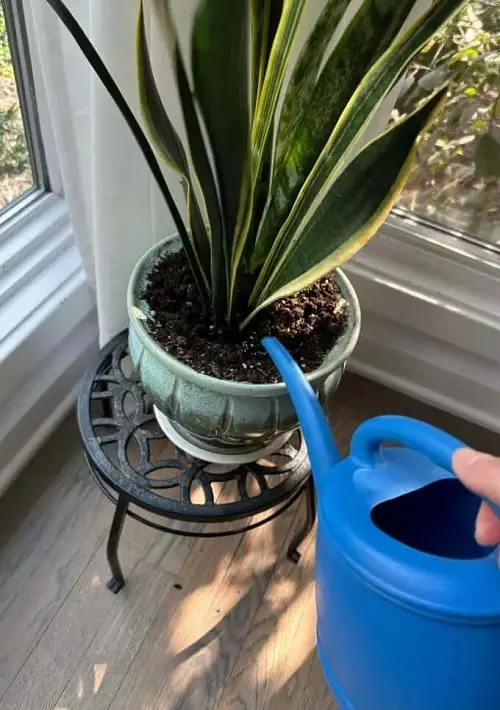
Finding the perfect balance in the watering schedule is crucial if you’re trying to get it to produce pups.
Overwatering leads to root rot, which weakens the plant to the point where it can’t spare energy for offspring. On the other hand, regular underwatering forces it into survival mode, making it hoard resources rather than invest in new growth.
So, how do you ensure the right balance? The key is deep yet infrequent watering. Instead of giving your plant a few sips here and there, water it thoroughly and then allow the soil to dry out completely before watering again. These tips will help!
Pro Tip: Use a moisture meter to gauge soil dryness, especially if you’re unsure. Alternatively, you can insert your finger about 2-3 inches into the soil to check moisture levels. Remember, it’s always better to err on the side of underwatering than overwatering with Sansevieria.
Reason 4: Lack of Proper Feeding
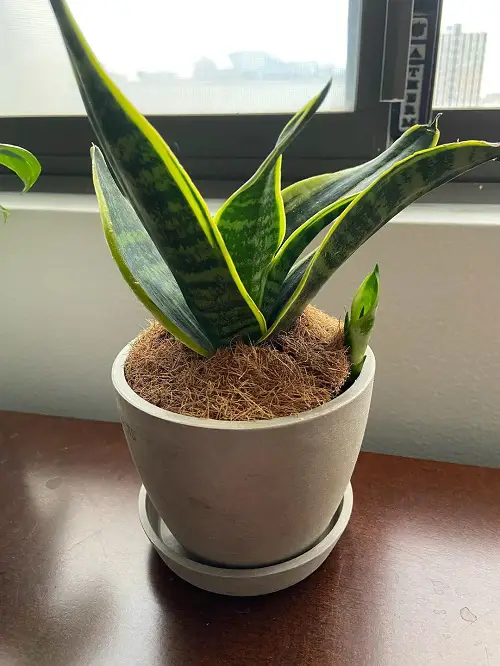
A complete lack of nutrients forces the plant into a slow growth and survival mode where it barely has enough energy to sustain itself, let alone push out new babies.
But if you give it too much and it gets more nitrogen than it needs, it will focus entirely on growing tall, lush leaves, and rhizome development (which produces pups) will take a backseat.
The best approach is to feed your plant a half strength diluted, balanced fertilizer of 10-10-10 or 20-20-20 ratio once in two months during the active growing season.
Remember, snake plants don’t need extreme foliage growth; they need a steady supply of phosphorus and potassium, which promote root and rhizome development. Here are a few good fertilizers you can try!
Pro Tip: Dilute the fertilizer to half or even a quarter of the recommended strength to avoid overfeeding. And apply it only during the active growing season–avoid it during cooler periods.
Reason 5: Containers That Are Too Large
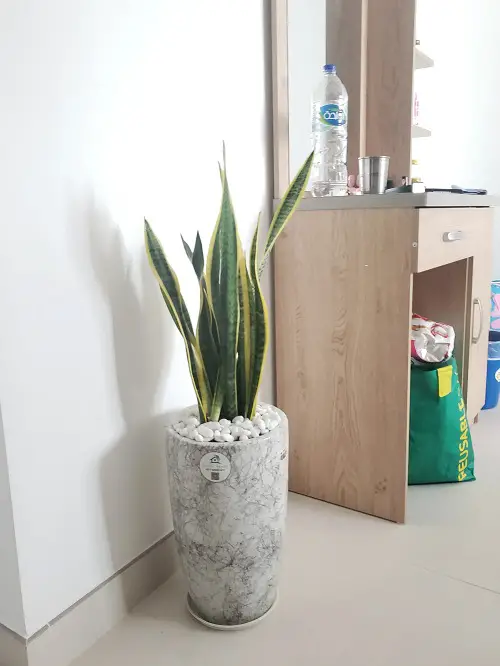
If your snake plant has been sitting in a pot that looks more like a spacious real estate than a snug home, tough luck–it’s one of the reasons why your snake plant never produces pups.
When constrained and slightly root-bound, these plants spread and produce offshoots, so when you plant them in an oversized pot, they interpret the extra room as a signal to expand the root system, not multiply.
The trick is to keep the plant slightly root-bound—not so cramped that it triggers suffocation but snug enough to trigger the pup-producing response.
Opt for a container just 1-2 inches wider than the root ball for best results. This provides enough room for healthy growth while triggering the plant’s instinct to multiply.
Pro Tip: When repotting, choose a pot that allows for just a little root growth rather than a significant size jump. Terra-cotta pots are excellent as they allow for better aeration and moisture control.
Reason 6: Lack of Light
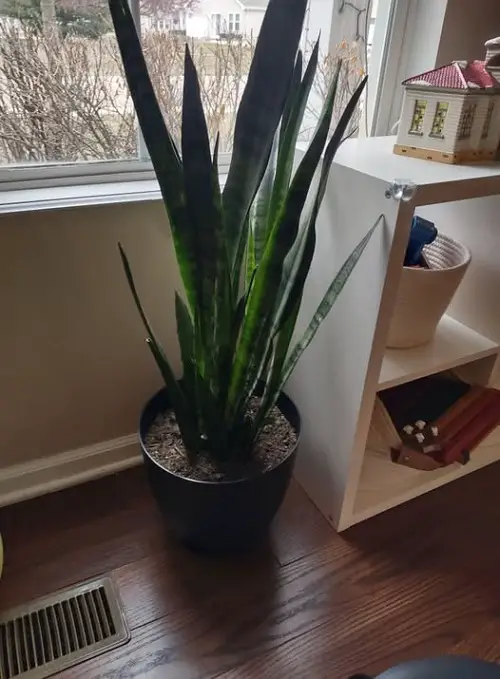
The trick is to move the plant a bit further away from its usual bright spot to see if it responds by sending out new shoots.
Another strategy is to gradually increase indirect daylight exposure—if your plant has been sitting in deep shade or dark, move it to a brighter spot to stimulate the need to multiply. You can also force it this way!
Pro Tip: When moving the plant, do so gradually to prevent shock. Monitor it for signs of stress, such as leaf discoloration or wilting, and adjust accordingly.
Reason 7: It Is Too Young
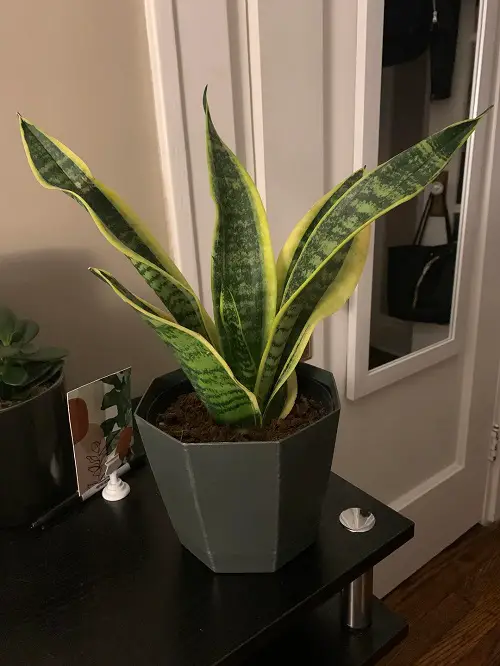
Patience may not be your thing, but it’s essential for snake plants to produce pups. If your plant is still in its early years, less than 2-3 years old, it may not be ready to expand.
Young snake plants focus all their energy on building strong roots and sturdy leaves before they even consider sending rhizomes for offshoots. The simple solution is to wait it out.
During this time, focus on providing optimal growing conditions to ensure the plant matures strong and healthy. Consistent care will pay off when your plant is ready to propagate. And once you do get the pups, here’s how to plant them for faster growth!
Well, now that you know all the ins and outs, it’s time to put these things to good use and get to work! Do let us know how it goes for you in the comments below!


